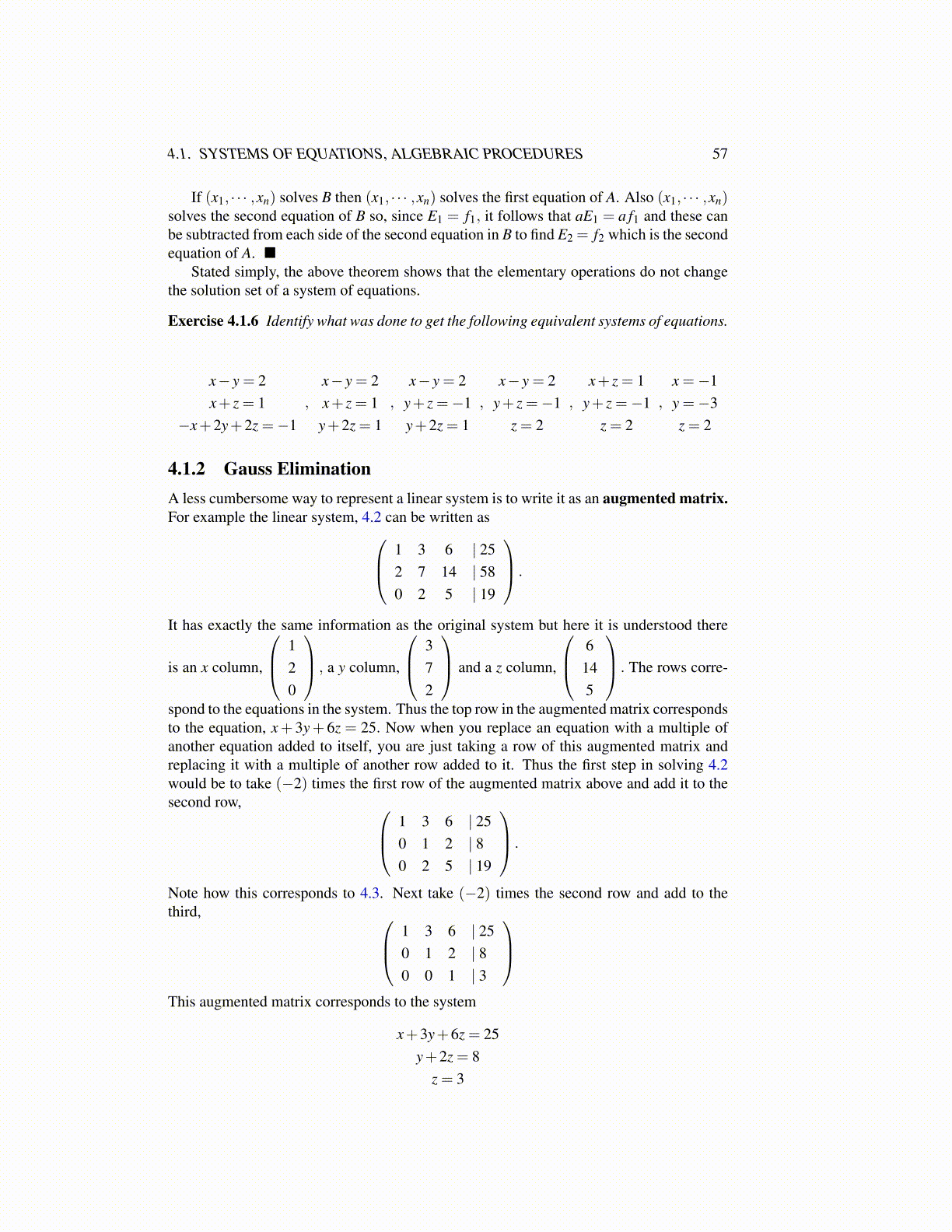
4.1. SYSTEMS OF EQUATIONS, ALGEBRAIC PROCEDURES 57
If (x1, · · · ,xn) solves B then (x1, · · · ,xn) solves the first equation of A. Also (x1, · · · ,xn)solves the second equation of B so, since E1 = f1, it follows that aE1 = a f1 and these canbe subtracted from each side of the second equation in B to find E2 = f2 which is the secondequation of A. ■
Stated simply, the above theorem shows that the elementary operations do not changethe solution set of a system of equations.
Exercise 4.1.6 Identify what was done to get the following equivalent systems of equations.
x− y = 2x+ z = 1
−x+2y+2z =−1,
x− y = 2x+ z = 1y+2z = 1
,
x− y = 2y+ z =−1y+2z = 1
,
x− y = 2y+ z =−1
z = 2,
x+ z = 1y+ z =−1
z = 2,
x =−1y =−3z = 2
4.1.2 Gauss EliminationA less cumbersome way to represent a linear system is to write it as an augmented matrix.For example the linear system, 4.2 can be written as 1 3 6 | 25
2 7 14 | 580 2 5 | 19
.
It has exactly the same information as the original system but here it is understood there
is an x column,
120
, a y column,
372
and a z column,
6145
. The rows corre-
spond to the equations in the system. Thus the top row in the augmented matrix correspondsto the equation, x+ 3y+ 6z = 25. Now when you replace an equation with a multiple ofanother equation added to itself, you are just taking a row of this augmented matrix andreplacing it with a multiple of another row added to it. Thus the first step in solving 4.2would be to take (−2) times the first row of the augmented matrix above and add it to thesecond row, 1 3 6 | 25
0 1 2 | 80 2 5 | 19
.
Note how this corresponds to 4.3. Next take (−2) times the second row and add to thethird, 1 3 6 | 25
0 1 2 | 80 0 1 | 3
This augmented matrix corresponds to the system
x+3y+6z = 25y+2z = 8
z = 3